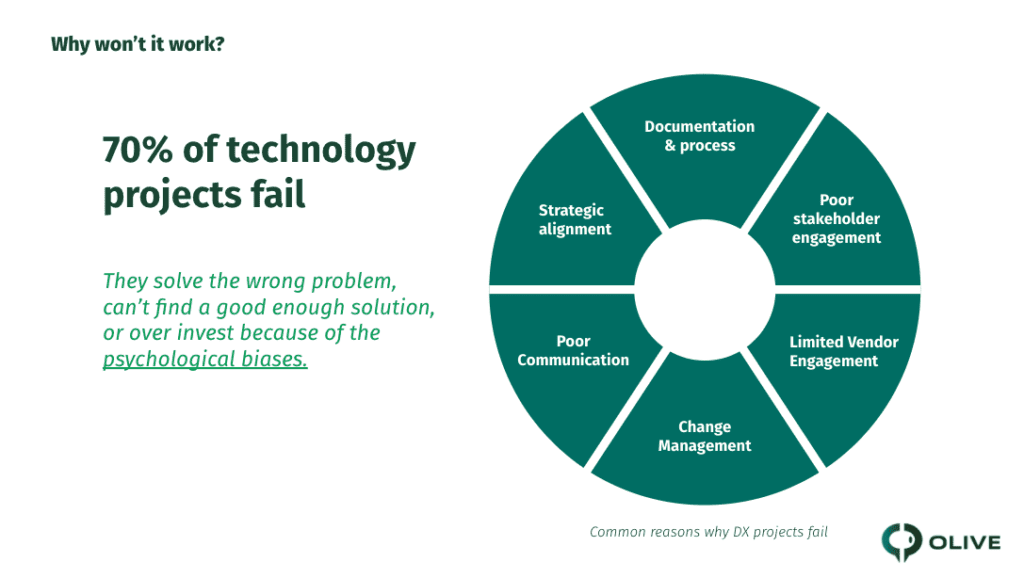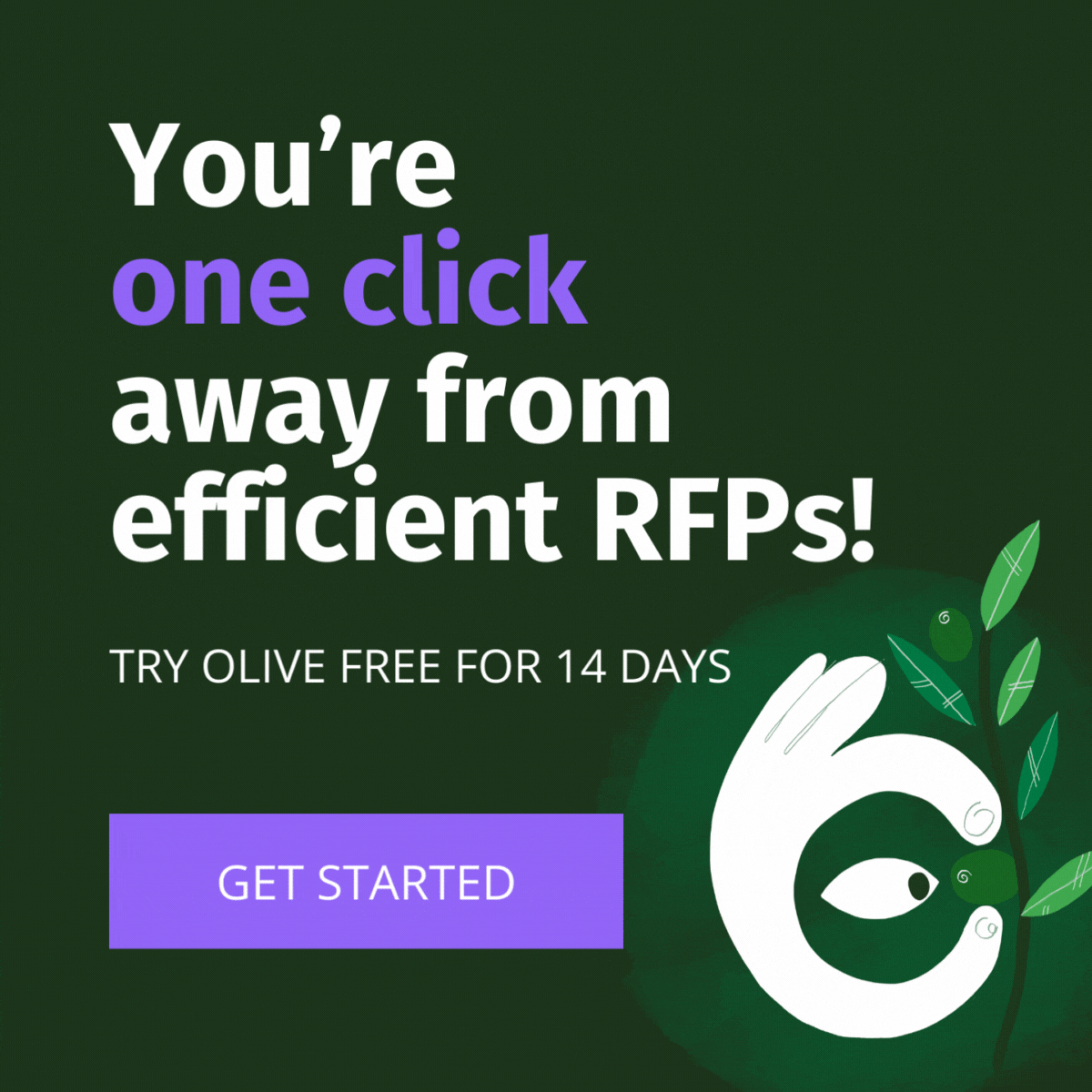Traditional RFP Tools are obsolete and ripe for disruption. The traditional request for proposal (RFP) process needs to be updated. The rigid, siloed structure of RFPs does not allow for relationship-building or meaningful dialogues between Tech Vendors and enterprises. Because RFPs are one-size-all, they overlook vendors who fit the brand and the business requirements perfectly. The process has become more about completing the checklist than sourcing the right solution. This holds back innovation. Let’s explore how next-generation Digital RFP Tools can disrupt the process.
Why is the Traditional RFP Process Obsolete?
The traditional RFP process will soon be history, and no one will miss it. Here’s why.
For many years the Request for Proposal (RFP) has been a standard procurement process for many years. As a component of the formal bidding process, an RFP is used to collect information from vendors to ensure that the process is open, transparent, and fair. Unfortunately, writing an RFP is a painstaking process. You must meet with all your stakeholders, take on piles of feedback, sort and compile the information, polish it, and finally send it out to multiple vendors. And who has time for that?!

Many organizations skip out on these steps, but this often ends in chaos if (and when) they choose the wrong vendor. We always say that finding best-fit technology solutions in collaboration with key stakeholders and end users is key to driving digital transformation. So shortcutting this process and going straight to a few “well-known” or top-reviewed vendors can result in failed digital transformations. No wonder 70% of technology projects fail.
On top of this, the RFP process is a different kind of nightmare for vendors. There are numerous rules, including pages and pages of data to sift through.
#RIPRFP
Pros and Cons of Traditional RFP Tools and Processes
Cons:
A very very very very long evaluation process
Evaluating solutions is long, convoluted, and biased. The traditional enterprise software selection process can range between 6 and 18 months and span multiple IT project phases.
An oversaturated market of solutions (that ultimately pay for visibility)
With so many software solution vendors (over 300 in some cases), manually looking at how all vendors meet your needs is impossible. Filtering through the BS Marketing and Sales to get to what these vendors do and objectively comparing each one to your business needs takes months to do manually in an RFP, yet up to now, this has been the only way to make the right choice.
Not enough detail
Creating a detailed enough RFP to provide to a potential vendor is near impossible. A document cannot effectively communicate organizational structure and business rationale, requirements and priorities, integration points, and all other details required to scope and build software. We’ve seen countless RFP examples, and none has successfully addressed every need and function.
Lack of Consensus
This State of the RFP Report shows 35% of proposal scores lack consensus, possibly due to 4-5 evaluators per RFP. More evaluators mean less consensus and longer evaluation times. There’s a huge opportunity here for an agile digital process that allows more evaluators, and more consensus with faster evaluation times.
Excess resources and money spent
Responding to RFPs requires time and money from the vendor and also takes up resources from the inquiring organization. Because the RFP process generates stacks of mostly useless proposals, a good vendor will rarely bother to participate. An RFP’s purpose is to find you the best vendor. But if a vendor is already in high demand, why compete with the masses? As a result, you frequently receive many proposals from vendors that require the work but are not the best fit.
Pros:
Frankly, RFP pros are a lot more challenging to come by.
On the upside of the traditional RFP process, you will receive multiple bids from various partners, learn more about what’s available in the industry, and access vendor pricing. However, it’s important to remember that quality trumps quantity when it comes to RFPs, and sifting through vendor after vendor is not the best approach.
End of Traditional RFP Tools and Processes, and Next-Generation Alternatives
Looking for traditional RFP alternatives? Smart move. Let’s run through some options to step away from the stone age of traditional RFPs:
RFP Automation Software
Olive is a next-generation software sourcing platform that turns the traditional RFP Process on its head.
With exceptional internal stakeholder and vendor collaboration, requirements management, project templates, and vendor comparison matrix reports, Olive is more agile, digital, and collaborative than traditional RFP tools. Olive allows multiple department heads and vendors to work together seamlessly, speeding up decision-making. You can maintain anonymity while inviting vendors into your project, taking back control of the buying process and ensuring you source exactly what’s needed for the business.
With Olive, you’ll be able to make informed, data-driven decisions faster than ever before. Here’s how it helps companies revolutionize how they source tech partners.
Save Time with Pre-created Software Evaluation Project Templates
Our project templates come with pre-loaded discovery surveys, standard requirements, vendor responses, and possible solutions to help you find the best-fit solutions quickly. We add new templates every month to keep you up-to-date.
Efficiently Manage Requirements with Olive
Our requirement libraries and template-building tools allow you to build out your requirements templates and assign them to functional, non-functional, and evaluation criteria sections. Our requirements management software ensures that everyone’s voices are heard, regardless of their location or work preference.
Collaborate with Key Stakeholders to Gather and Rank Requirements
Deploy surveys at any stage to capture, prioritize, manage, and rank requirements. Olive’s surveys facilitate a seamless requirements-gathering process, capturing and recording feedback from key stakeholders across the organization.
Reuse Requirements Templates for Future Projects
Olive’s requirements management software helps you identify, gather, rank, and manage requirements. You can reuse templates for future projects, saving time and increasing efficiency.
Saying Goodbye to Traditional RFP Tools and Processes, and Embracing Next-Generation Digital Alternatives
The RFP process is critical to business operations, enabling organizations to select the best vendors and partners for their needs. However, as technology and business practices evolve, traditional RFP tools become increasingly outdated, inefficient, and cumbersome. To stay competitive and achieve better outcomes, businesses must embrace the next generation of RFP tools and alternatives.
One such tool is Olive, a modern, digital, and collaborative online RFP software that streamlines the entire vendor selection process. Unlike traditional RFP tools, Olive allows multiple department heads and vendors to collaborate seamlessly, accelerating decision-making processes and enabling informed, data-driven decisions.
Here are some of the benefits of using Olive instead of traditional RFP tools:
Centralized Data Management
With Olive, you can manage the entire vendor selection process in one online app, eliminating the need for spreadsheets, meetings, and emails. All your data and insights are stored in one place, enabling easy access and collaboration across departments.
Real-time Vendor Evaluation
Unlike traditional RFI methods, Olive enables you to invite as many vendors as you want directly into the project. As vendors respond to your requirements and answer questions, you can see the results and how well they score against your needs in real-time.
Enhanced Collaboration and Engagement
Olive provides a platform for seamless collaboration with vendors within the project, without relying on emails or phone calls. In-app chat allows stakeholders to review, score, and discuss vendor responses internally, saving time and boosting productivity.
Digital RFP Tools are the Future!
In summary, the future of RFP tools is in adopting next-generation alternatives like Olive. By leveraging modern technology and collaboration capabilities, businesses can streamline their vendor selection processes, achieve better outcomes, and stay ahead of the competition.





